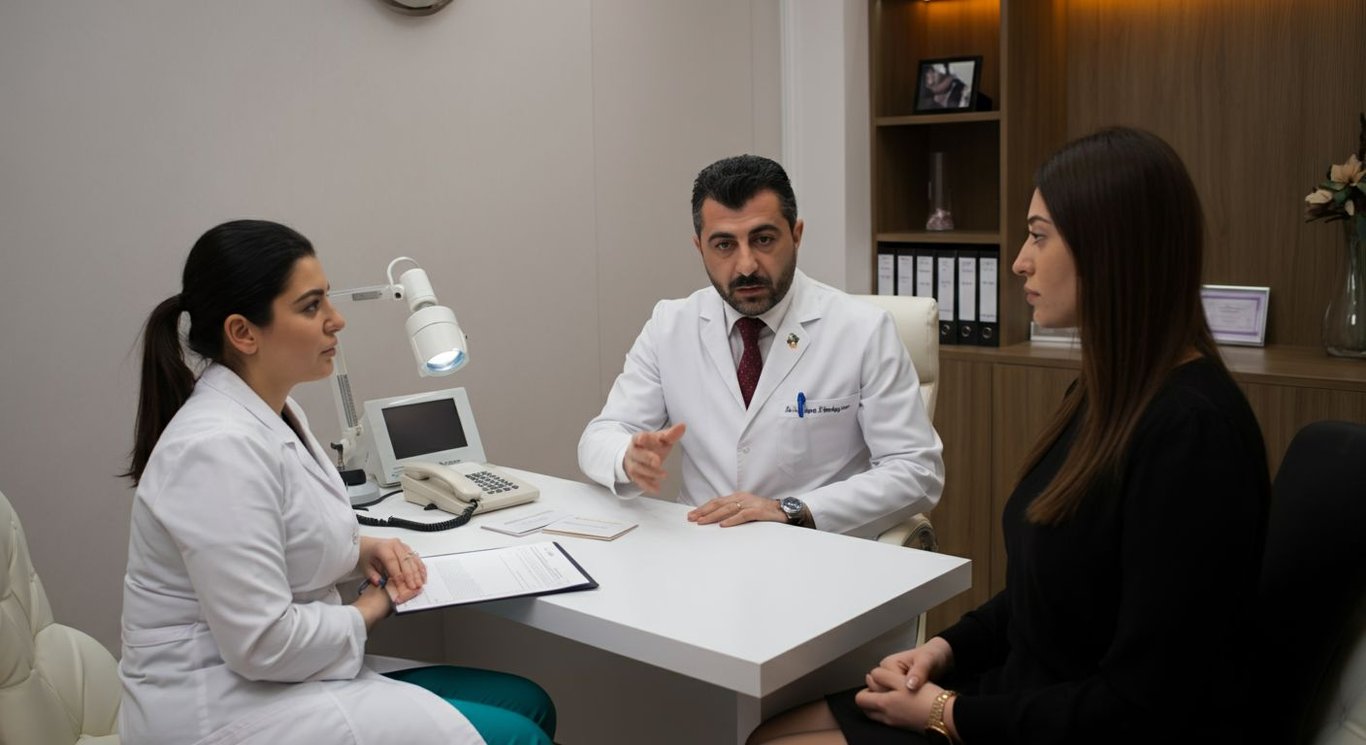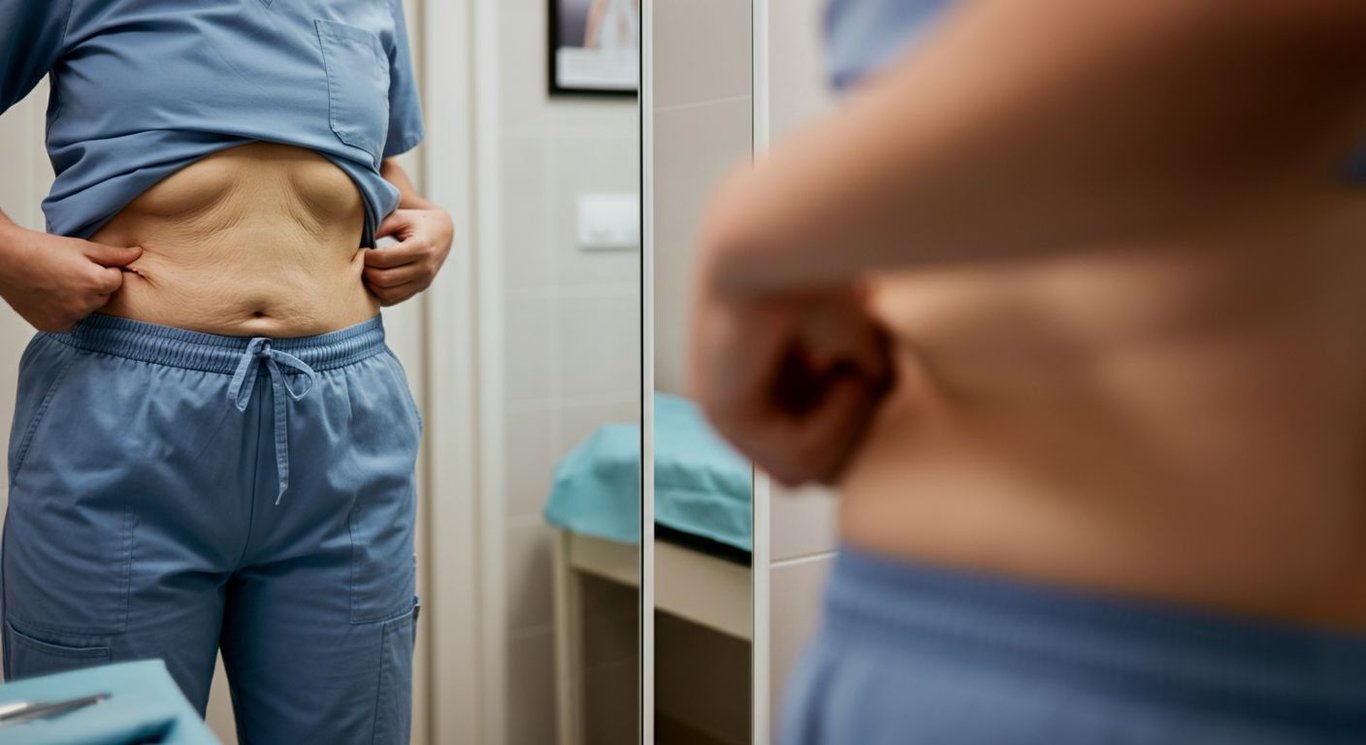Tummy Tuck Transformation: Is Abdominoplasty Right for You?
Explore the transformative journey of a tummy tuck and find out if you're an ideal candidate for abdominoplasty.
Abdominoplasty, commonly known as a tummy tuck, has become an increasingly popular cosmetic procedure for those seeking to enhance their body contour and regain confidence. This surgery not only tightens loose skin but also repairs weakened abdominal muscles, providing a firmer, flatter profile. Understanding whether this transformative surgery is right for you involves exploring various aspects, from distinct surgical techniques to recovery processes. Let's delve deeper into the world of tummy tucks and discover if this might be the right solution to meet your aesthetic goals.
Beyond the 'Tuck': Understanding the Abdominoplasty Procedure
Understanding the Basics of Abdominoplasty
Abdominoplasty, commonly known as a tummy tuck, is more than just a cosmetic procedure; it's a surgical intervention designed to enhance the abdominal profile. The primary focus is on removing excess skin and fat, and tightening abdominal muscles that may have weakened due to pregnancy or significant weight fluctuations. While abdominoplasty is not a weight-loss solution, it can dramatically improve body shape. In fact, about 85% of patients report increased satisfaction with their physical appearance following this procedure. Different techniques allow plastic surgeons to tailor the approach to individual needs, ensuring optimal cosmetic outcomes. This procedure is also considered body contouring , especially for those with stubborn abdominal fat.
Key Considerations for Different Tummy Tuck Types
- Full Tummy Tuck:This involves a larger incision and addresses muscle repair, excess skin removal from the navel to the pubic area, and potential repositioning of the belly button.
- Mini Tummy Tuck:Focuses on the area below the navel and requires a shorter incision, making it suitable for those with less skin laxity.
- Extended Tummy Tuck:Extends the incision around the hips to address excess skin on the sides and is often recommended after significant weight loss.

Tummy Tuck vs. Panniculectomy: Defining the Differences
Deciding Between Tummy Tuck and Panniculectomy
Choosing between a tummy tuck and a panniculectomy involves understanding each procedure's specific goals. The crucial distinction lies in whether muscle repair is needed. A tummy tuck, or abdominoplasty, is designed to tighten weakened abdominal muscles while removing excess skin and fat. Panniculectomy, however, focuses solely on removing the overhanging pannus (excess abdominal skin) without addressing muscle laxity. Patients who have undergone significant weight loss may find panniculectomy sufficient if their primary concern is removing excess skin. In contrast, individuals looking to restore a flatter, firmer abdomen with improved muscle tone may benefit more from a comprehensive abdominoplasty procedure.
Key Differences Between Tummy Tuck and Panniculectomy
- Muscle Repair: Tummy tuck includes muscle tightening, while panniculectomy does not. This is crucial for patients with diastasis recti.
- Cosmetic Goals: A tummy tuck aims for overall abdominal reshaping, whereas panniculectomy primarily addresses excess skin removal.
- Surgical Complexity: Abdominoplasty is more complex, often involving repositioning the belly button and liposuction for enhanced contouring.

Sculpting Success: Combining Tummy Tuck with Liposuction
Enhancing Contours with Combined Procedures
Combining a tummy tuck with liposuction can significantly improve body contouring results. The integration of these procedures allows for a comprehensive approach, addressing both excess skin and stubborn fat deposits. Liposuction targets subcutaneous fat that a tummy tuck alone may not fully address, particularly in areas distant from the abdominal region. Approximately 60% of patients who undergo a combined tummy tuck and liposuction experience a more sculpted and harmonious physique. This dual approach is especially effective for those seeking significant improvements in their body shape.
Benefits of Combining Tummy Tuck and Liposuction
- Enhanced Contouring: Removes excess skin and fat for a more sculpted appearance using abdominoplasty and fat removal from the targeted area with liposuction.
- Improved Proportions: Creates balanced body proportions by addressing fat deposits that contribute to disproportionate contours.
- Comprehensive Transformation: Provides a more dramatic aesthetic improvement than either procedure could achieve alone, especially for tummy tuck candidates after weight loss.

Tummy Tuck Recovery: Charting Your Path Back to Wellness
Navigating the Initial Stages of Recovery After Abdominoplasty
The journey to full recovery after a tummy tuck begins immediately following the procedure. During this immediate postoperative period, swelling and bruising are common and typically peak within the first week. Adhering to your surgeon's specific instructions is crucial for minimizing these effects and ensuring proper healing. Initial recovery focuses on managing discomfort with prescribed medication, maintaining wound care, and gradually resuming light activities. A support system, such as family or friends, is beneficial during this early phase. Understanding these initial recovery steps sets the stage for a smoother and more predictable healing experience. About 90% of patients report that following postoperative guidelines closely leads to improved comfort and outcomes in the first few weeks.
Essential Steps for a Smooth Tummy Tuck Recovery
- Rest and Limited Activity: Avoid strenuous activities and heavy lifting for at least six weeks to prevent complications and promote healing after your tummy tuck surgery.
- Wound Care: Follow the surgeon’s instructions for cleaning and dressing the incision sites to minimize the risk of infection.
- Compression Garments: Wear compression garments as directed to reduce swelling, support abdominal tissues, and assist in contouring the abdomen.
Choosing the Right Surgeon and Facility
The Importance of Surgeon Credentials and Facility Accreditation
Selecting an experienced surgeon and an accredited facility is paramount for achieving safe and successful outcomes from a tummy tuck. Prospective patients should prioritize researching the surgeon's qualifications, including board certifications and specific experience in abdominoplasty procedures. It's also advisable to review patient testimonials and before-and-after photos to assess the surgeon's aesthetic outcomes. Choosing a facility with accreditation ensures that it meets stringent safety and quality standards, further minimizing the risk of complications. For instance, facilities accredited by reputable organizations are typically equipped with state-of-the-art technology and adhere to rigorous protocols. When selecting a provider for tummy tuck surgery, consider options like estethica, known for its advanced technology and patient-focused care.
Evaluating Surgeon Experience and Facility Standards
- Verify Credentials: Confirm the surgeon's board certification and experience with tummy tuck procedures to ensure expertise.
- Review Patient Feedback: Analyze patient reviews and before-and-after photos to gauge satisfaction and aesthetic results.
- Accreditation Status: Ensure the facility holds accreditation from a recognized organization, indicating adherence to high safety and quality standards.
Real Expectations and Satisfaction
Aligning Expectations with Abdominoplasty Results
Achieving satisfaction with a tummy tuck isn't solely about physical transformation; it's also heavily influenced by having realistic expectations. This surgical procedure is excellent for enhancing body contours, especially after pregnancy or significant weight loss, but it's crucial to recognize that it is not a weight loss method. Successful outcomes reported by individuals highlight improvements beyond physical appearance, such as enhanced self-esteem and increased confidence. For instance, patients often share how consultations with their plastic surgeon at estethica helped them align their expectations with achievable outcomes, creating higher satisfaction levels. Approximately 95% of individuals who approach the surgery with clear, realistic goals report satisfaction with their results.
Key Factors Influencing Satisfaction with a Tummy Tuck
- Realistic Expectations: Understand the procedure's capabilities and limitations as a tummy tuck surgery, focusing on contour improvement rather than weight loss.
- Surgeon Communication: Engage in detailed consultations to discuss goals, potential outcomes, and understand the tummy tuck recovery time to set realistic expectations.
- Emotional Preparation: Acknowledge that the transformation involves more than just physical changes; improved self-image and confidence also play a role in overall satisfaction.
The Role of Consultation in Achieving Optimal Results
- Personalized Assessment: Surgeons tailor their approach based on individual anatomy, skin elasticity, and muscle tone, setting realistic expectations for each unique case.
- Detailed Planning: Patients gain insights into what the surgery can realistically achieve, including the extent of skin removal, muscle repair, and potential scar placement.
- Informed Decision-Making: Clear communication ensures patients are fully informed about the risks, benefits, and alternatives, leading to more confident and satisfied decisions.
Laser-Assisted Liposuction Ensures Reduced Trauma and Swift Recovery
Patient-Centric Approach with Advanced Technology Ensures Optimal Results
Frequently Asked Questions
What is a tummy tuck (abdominoplasty) and who is it for?
How does a tummy tuck differ from a panniculectomy?
What is the typical tummy tuck recovery time, and what does it involve?
Can liposuction be combined with a tummy tuck, and what are the benefits?
What should I consider when choosing a surgeon for abdominoplasty?
Discover your healthy beauty transformation with estethica's expert guidance.
📞 Call Now for a Free Consultation!